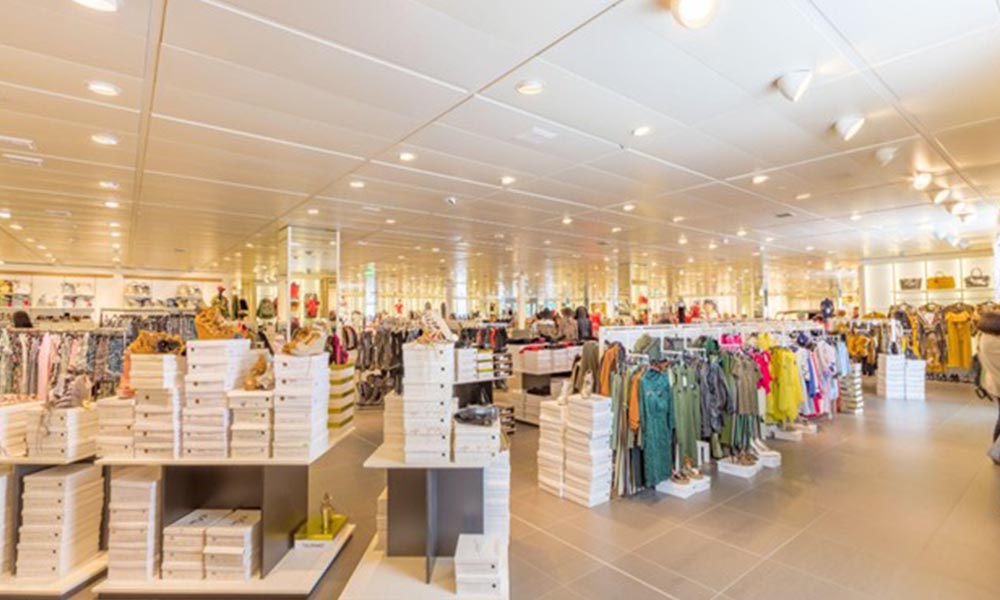Fashion retail is constantly evolving, with new trends and technologies shaping the way we shop for clothes and accessories. In this article, we will explore some of the key fashion retail trends that are likely to dominate the industry in the coming years. From the rise of sustainable and ethical fashion to the increasing use of virtual and augmented reality, these trends are sure to have a big impact on how we shop and what we buy.
Sustainable and ethical fashion
One of the most significant trends in fashion retail is the growing demand for sustainable and ethical clothing. As consumers become more conscious of the environmental and social impacts of the fashion industry, they are increasingly looking for brands that prioritize sustainability and ethical production methods. This includes using sustainable materials, such as organic cotton and recycled polyester, as well as ensuring fair labor practices throughout the supply chain.
In response to this trend, many fashion retailers are incorporating sustainable and ethical practices into their operations. For example, H&M has launched a program called “Conscious Collection,” which features clothing made from sustainable materials and produced in an ethical manner. Other retailers, such as Patagonia and Eileen Fisher, have long been known for their commitment to sustainable and ethical fashion.
Virtual and augmented reality
Another major trend in fashion retail is the use of virtual and augmented reality (VR and AR) technology. This technology allows customers to try on clothes and accessories in a virtual environment, making it easy to see how an item will look and fit before making a purchase. Additionally, VR and AR can also be used to create virtual fashion shows and other immersive shopping experiences.
Retailers such as Zara, Topshop, and Ralph Lauren have already begun experimenting with VR and AR technology in their stores. For example, Ralph Lauren has developed a virtual reality fitting room that allows customers to see how a piece of clothing will look on them before making a purchase. Other retailers have launched virtual try-on apps that allow customers to see themselves in different outfits from their smartphones.
Artificial intelligence and machine learning technology
Another trend that is becoming increasingly popular in fashion retail is the use of artificial intelligence and machine learning technology. These technologies can be used for a variety of purposes, such as personalizing product recommendations, automating inventory management, and analyzing customer data to gain insights into buying behavior. This can help retailers to optimize their operations and create a more efficient and personalized shopping experience for customers. Some retailers like Zara, H&M and ASOS already use AI in various ways to improve their operations and customer experience. As technology continues to advance, it is likely that more retailers will start to adopt these technologies in order to stay competitive in the industry.
Social media and influencer marketing
Social media platforms have become an increasingly important tool for fashion retailers to promote their products and connect with customers. From Instagram to TikTok, retailers are using these platforms to showcase their latest collections and to collaborate with influencers to promote their products. Retailers such as Fashion Nova and ASOS have been particularly successful at leveraging social media and influencer marketing to drive sales. For example, Fashion Nova has used influencer partnerships to promote their clothing on Instagram, while ASOS has used social media to create a sense of community and engagement among their customers.
Limited edition and exclusive collaborations
Another trend within the fashion retail industry is the growing popularity of limited edition and exclusive collaborations. One example of this is the recent release of the Nike Dunk which was highly sought after by sneaker enthusiasts and sold out within minutes of its release. This shoe was a collaboration between Nike and various artists, designers and musicians. The limited release and exclusive collaborations create a sense of exclusivity and hype, which drives demand and can help retailers to sell out their limited stock quickly.
This trend is particularly popular among younger consumers who are willing to pay a premium for exclusive and limited-edition items. It is clear that exclusive collaborations and limited-edition releases are becoming an increasingly important aspect of fashion retail, and we can expect to see more of these types of releases in the future.
Conclusion
The fashion retail industry is constantly evolving, with new trends and technologies shaping the way we shop for clothes and accessories. From the rise of sustainable and ethical fashion to the increasing use of virtual and augmented reality, these trends are sure to have a big impact on the industry in the coming years. Retailers who can adapt to these trends and find ways to incorporate them into their business models will be better positioned for success in the future.









